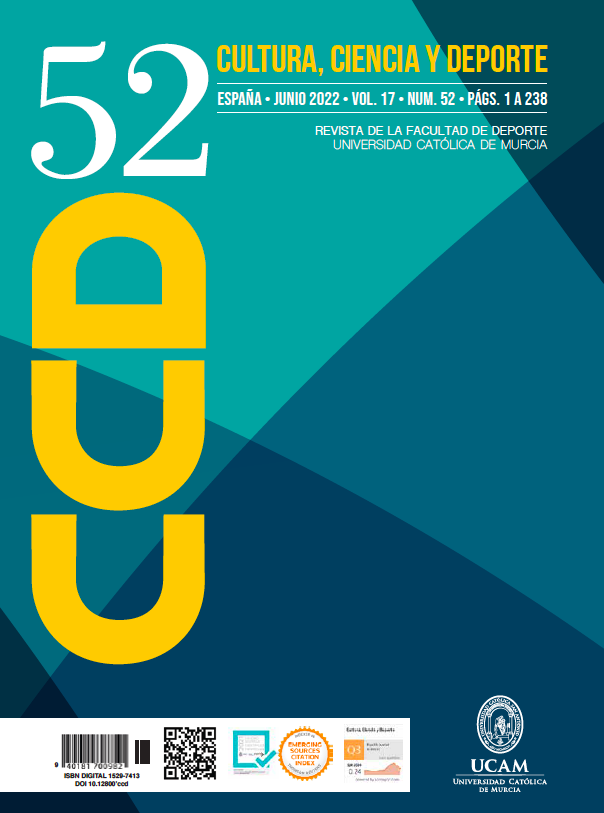Factors associated with active commuting to school in adolescents
DOI:
https://doi.org/10.12800/ccd.v17i52.1871Resumen
Active commuting contribute to the realization of physical activity by adolescents, being able to exert beneficial effects on health. The aim of the study was to analyze active trips to the school, evaluating their relationship with various lifestyle habits and indicators of physical and psychosocial health, as well as the influence of different sociodemographic variables. The study was conducted on a sample of 761 students (14.51 ± 1.63 years) from 25 educational centers in northern Spain. active commuting to school, hours of nightly sleep, adherence to the Mediterranean diet, physical activity engagement, maximum oxygen uptake, body mass index, health-related quality of life, self-esteem and various sociodemographic factors were analysed for all participants. Being older, studying in urban or publicly owned centers, residing in favorable environments for physical activity, having a low / medium socioeconomic level and having higher levels of physical activity, were found to be predictive factors of active trips to the school. Likewise, active transport reported positive associations with MD. Interventions aimed at promoting active displacement should take these predictive factors into account, trying to apply them especially to the most vulnerable groups.
Publicado
Cómo citar
Número
Sección
Licencia
Derechos de autor 2022 Creative Commons Attribution License

Esta obra está bajo una licencia internacional Creative Commons Atribución-NoComercial-CompartirIgual 4.0.
Los autores que publican en esta revista están de acuerdo con los siguientes términos:- Los autores conservan los derechos de autor y garantizan a la revista el derecho de ser la primera publicación del trabajo al igual que licenciado bajo una Creative Commons Attribution License que permite a otros compartir el trabajo con un reconocimiento de la autoría del trabajo y la publicación inicial en esta revista.













